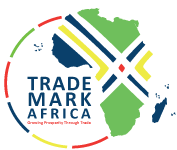Three little boys in Kigali are sharing a lollipop. They lick it in turns. The lollipop is imported, so 45% of its cost is due to transport and allied costs. It might have been made in Kenya or Tanzania or even further afield, and it has travelled thousands of kilometres and several borders. So whichever of the boys bought that treat, he’s paying part of the freight clearance charges, handling charges, insurance, fuel costs and the salary of the trucker who got it to the Rwandan capital.
Logistics is a critical yet easily neglected component of economic development. Investment in agriculture is futile if there is no supply chain in place to get produce to market. Essential medication is rendered ineffective if it cannot be transported in the appropriate conditions. Consumer goods cannot improve people’s lives if the cost of importing them means they are too expensive for people to access. Yet in discussions of “sustainable development goals” or “poverty reduction”, there is too often a tendency to focus on headline targets and forget about the mechanics of delivery.
In East Africa, transport and freight costs are among the highest in the world, with freight logistics expendituremore than 50% higher per kilometre than in Europe or the United States.This extra cost is caused by a ‘logistics gap’: a lack of infrastructure, technology and expertise affecting everything from road networks, to payment systems and warehousing facilities. In landlocked countries like Rwanda and Burundi, this gap is even more pronounced: transport costs there can reach as high as 75% of the value of exports.
Transit times are also high in East Africa. The 1600km journey from Mombasa (Kenya) to Kigali (Rwanda) takes on average 422 hours – nearly 18 days. Trucks must stop at two border posts and are likely to encounter 45 road blocks, each of which involves delays and costs, as well as potentially damaging the goods being transited. In contrast, a truck covering a similar distance in Europe – driving from, say, Rotterdam (The Netherlands) to Budapest (Hungry) – would be able to complete the route in less than a day.
These high costs have a significant impact on the lives of people living in the region. Transportation expenses are passed on to small businesses and consumers – indeed, the World Bank estimates that logistics costs account for 40% of consumer prices in East Africa. Concretely, that is 250 million people, many of whom are already living in severe poverty, who are paying more for food, household goods and healthcare products. Added to this are the large numbers of small business owners unable to grow their companies because of the high overheads connected with distributing or sourcing their goods.
In order for East Africa’s exports to compete in the global marketplace, businesses operating in the region need to have reliable flows of inventories such as raw materials or finished goods, without which businesses need to carry higher levels of inventory to deal with uncertainty. This raises costs, erodes efficiency and results in poor competitiveness and high prices. In contrast, firms that can rely on efficient logistics, modern supply chains and just-in-time delivery systems are more efficient and cash generative and, therefore, more competitive and more readily integrated into regional and international global supply chains.
This applies just as much to international companies operating in the region as to local players. DHL, for example, has over 3300 service points across Africa – a network which it has developed by forming partnerships with small businesses, fuel retailers and supermarkets. The company has grown a successful business in Africa by adapting to local circumstances: the informal economy, rural population and large number of SMEs. Bolloré Africa Logistics also has a significant presence on the continent, investing in modernising ports in both West and East Africa to equip them to handle larger vessels.
For many companies, however, the prospect of entering a market with so many challenges is daunting. Since 2008, freight volumes through East Africa’s major ports, Mombasa and Dar es Salaam, have grown at 8% and 13% per annum respectively. With this growth come major transport and logistics investment opportunities, to handle the increased freight volumes. But in order to overcome the logistics gap in Africa, we need to take an innovative approach that draws on existing private sector expertise. It is innovation which has driven improvements in global logistics over the past decades. Electronic payment systems, real-time tracking software, shared services for SMEs and improvements to fleet vehicles are all ways in which the costs – in both time and money – of transporting goods can be reduced. Tapping in to this innovation and encouraging businesses to invest in pioneering solutions to logistics challenges will have a major impact on the lives of people across Africa, and will make delivering other development goals – like healthcare and food security – much easier.
One example of an innovative approach to support international entrants to Africa is the Logistics Innovation for Trade Fund (LIFT).LIFT aims to reduce the risk of investment by providing a matching grant to international/local private sector partnerships with transformative technologies or improved practice that will have a significant impact on the efficiency of the transport and logistics sector across East Africa. It will co-invest with the private sector in projects that may be too risky to undertake without such support – with the goal of challenging business to develop and test new ideas to reduce the cost of transports and logistics.
TradeMark Africa has held several briefing sessions with the East African and European logistics leaders on the Logistics Innovation for Trade Fund (LIFT) platform. These meetings brought together key players in the industry – both those interested in entering the region and those already active, including heads of major corporations – to discuss pushing the boundaries of innovation in new directions and improving transport and logistics efficiencies to and from the EAC.














